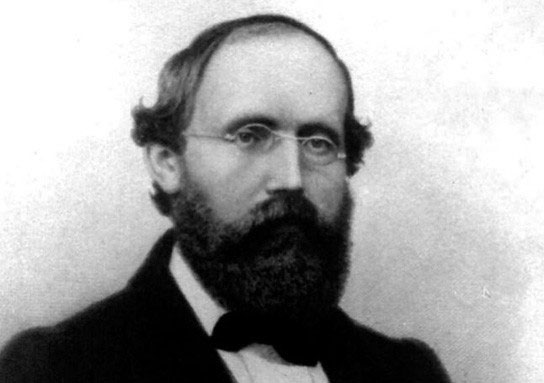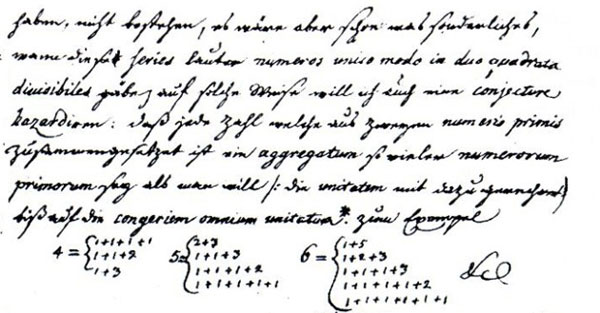Trying with the problem of 263 years, there is no right answer
Can you overcome obstacles to challenge humanity's most transcendent wisdoms for nearly three centuries?
In the field of mathematics, prime number problems hold a record of difficulty. There are simple hypotheses that make the mathematicians have a headache, 'wrestling' for hundreds of years and still cannot prove success. One of them must include the 263-year-old hypothesis of Christian Goldbach mathematician (1690-1764).

Christian Goldbach mathematician

Part of Goldbach's letter to Euler
Christian Goldbach is the academician of Saint Petersburg Academy of Sciences, the eminent mathematician of the 18th century with works related to differential equations. The problem of making his name famous after more than 250 years is the hypothesis of prime numbers (hereinafter referred to as the triad Goldbach hypothesis ): 'All integers greater than two are the sum of three primes '. For example: 35 = 19 + 13 + 3 or 77 = 53 + 13 + 11.
Similar to many other number theory problems, the Three-Tertiary Goldbach hypothesis is simple and easy to understand but extremely difficult to prove. This hypothesis was written by Goldbach in a letter to the mathematician Leonhard Euler (June 7, 1942) and for 263 years, no one has fully proven.
The person closest to the solution of the problem is mathematician Terence Tao of the University of California, Los Angeles. He proved that each odd number is a total of 5 prime numbers and he hopes to reduce from 5 to 3 to 'absolutely win' the Goldbach hypothesis in the future.
- Hanging the million prize 'dollars' for the decade problem
- 9 problems make brainwaves worldwide brain pain
- Are you among the 20%
- The matchstick problem made many people confused
- Why can water stop firing?
- 16-year-old student conquered the century problem
- The international press has a headache with Vietnam's super-difficult grade 3 problem
- Why aren't spider species caught in their own nets?
- Air pollution in Hanoi
- Children are more cavities
- Why was the Roman empire destroyed? (Part I)
- Auto Answer YM 8.0 - Auto reply chat in YM 8.0 with high customization ability
 'Fine laughs' - Scary and painful torture in ancient times
'Fine laughs' - Scary and painful torture in ancient times The sequence of numbers 142857 of the Egyptian pyramids is known as the strangest number in the world - Why?
The sequence of numbers 142857 of the Egyptian pyramids is known as the strangest number in the world - Why? History of the iron
History of the iron What is alum?
What is alum?